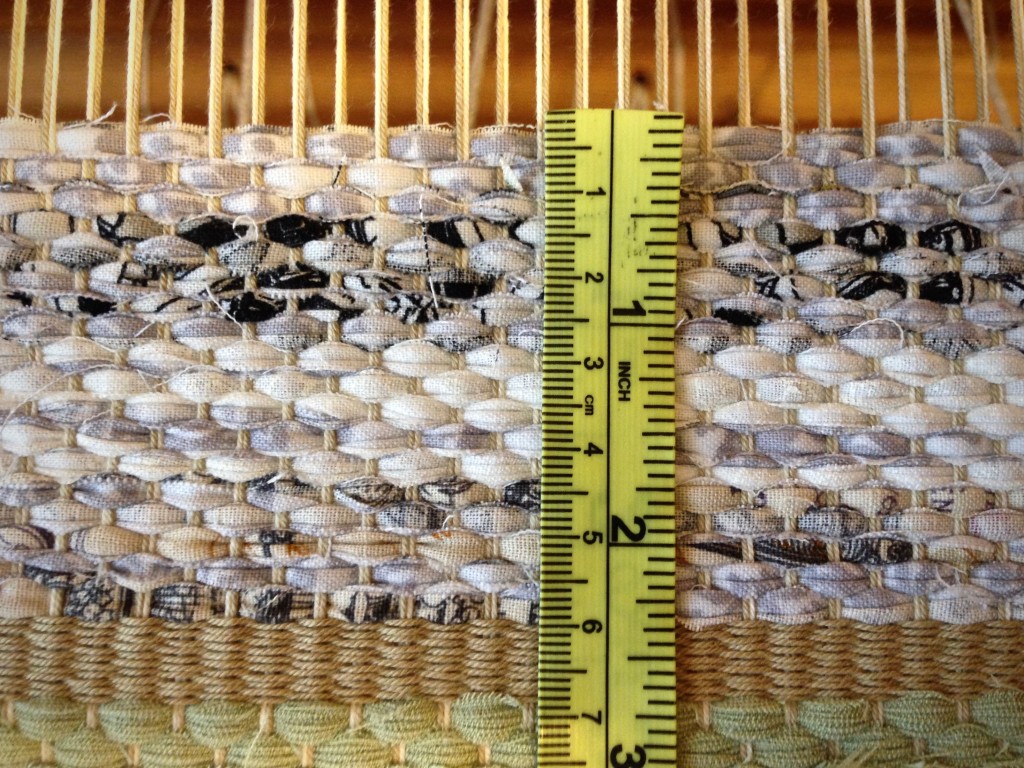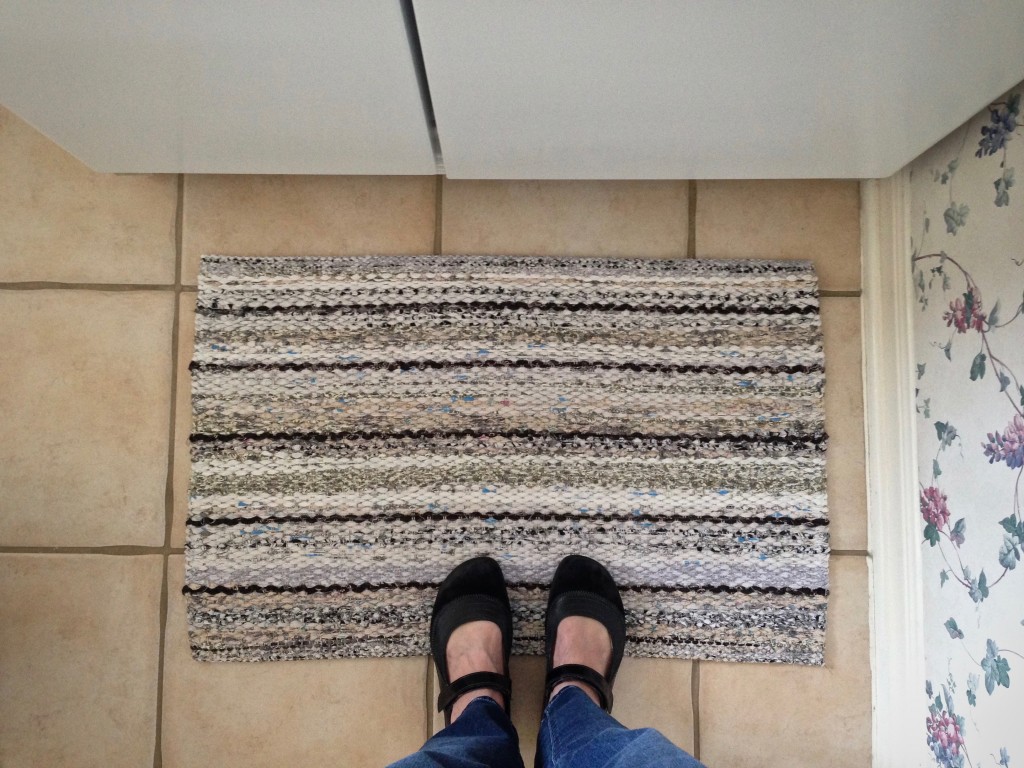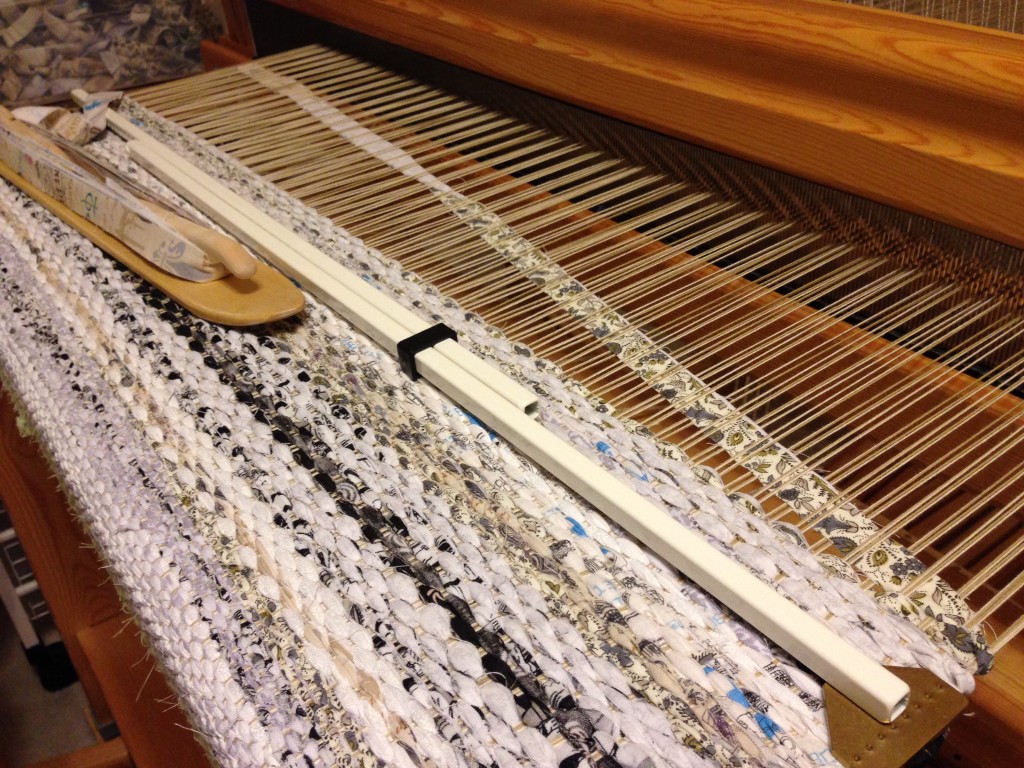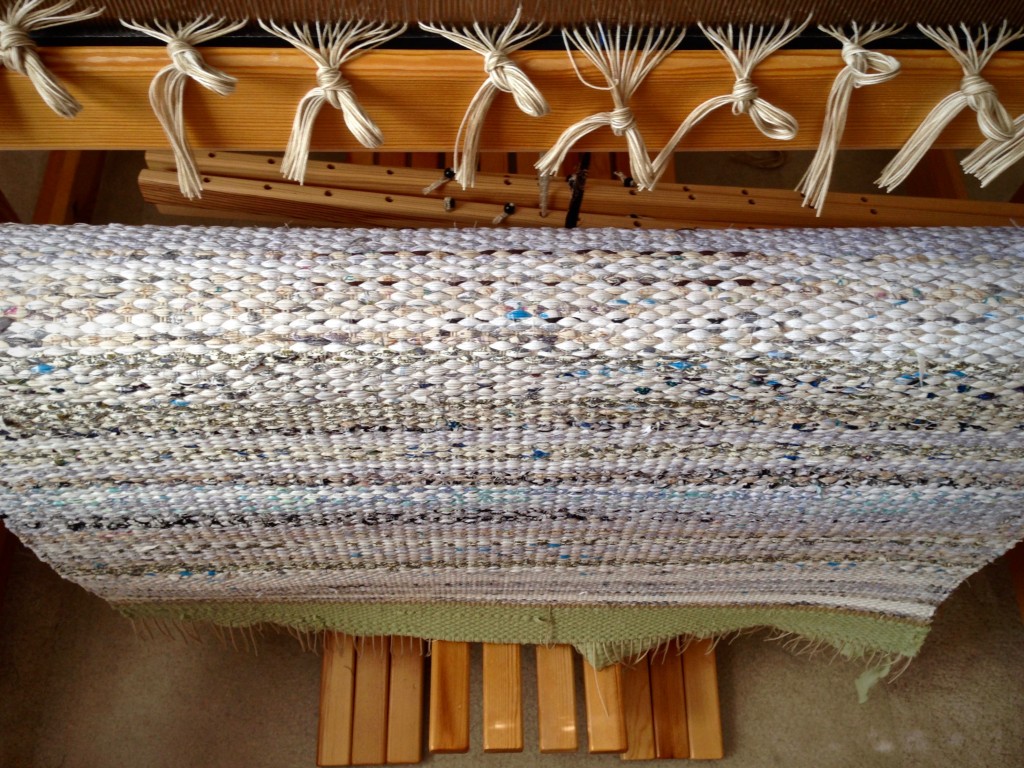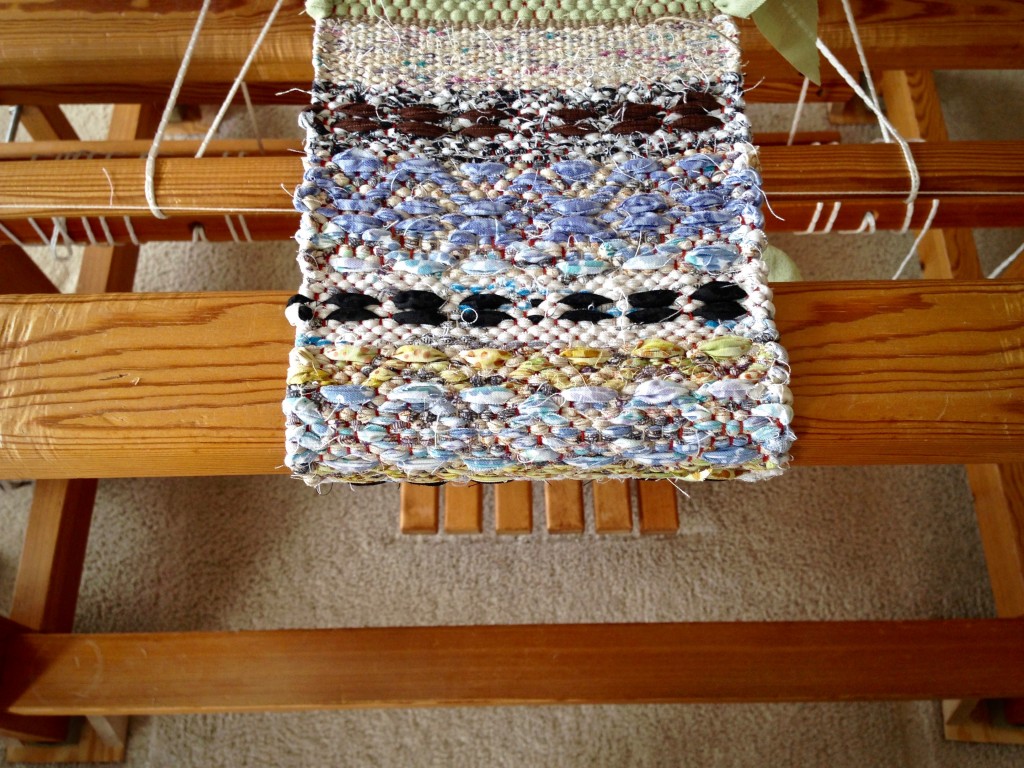An isolated thin weft stripe makes a bold statement. One simple technique greatly improves the efficiency of weaving such a stripe in a rag rug. This method eliminates the need to weave weft tails in at the beginning and end of the stripe. So, besides being efficient, the selvedges look better too.
How to Weave a Thin Weft Stripe (Two Picks)
1 Weave up to the stripe placement. No need to end the weft if the same weft will continue after the thin stripe.
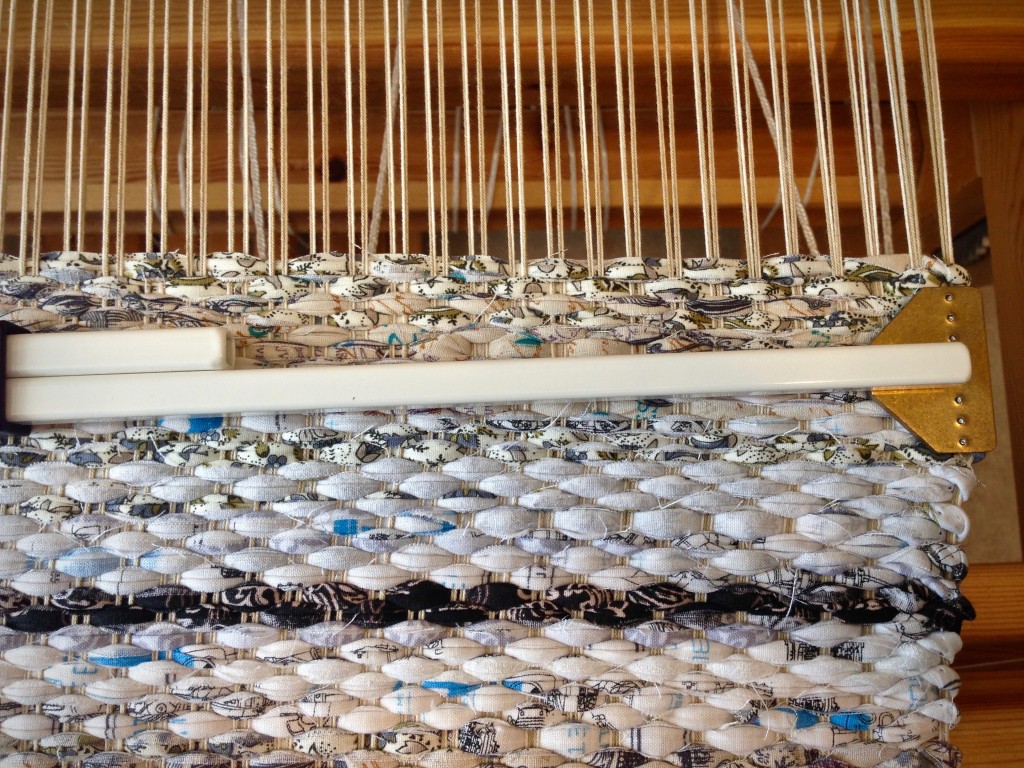
2 Place the first pick of the stripe in the shed, leaving a long tail of about 6 inches / 15 cm, or more.
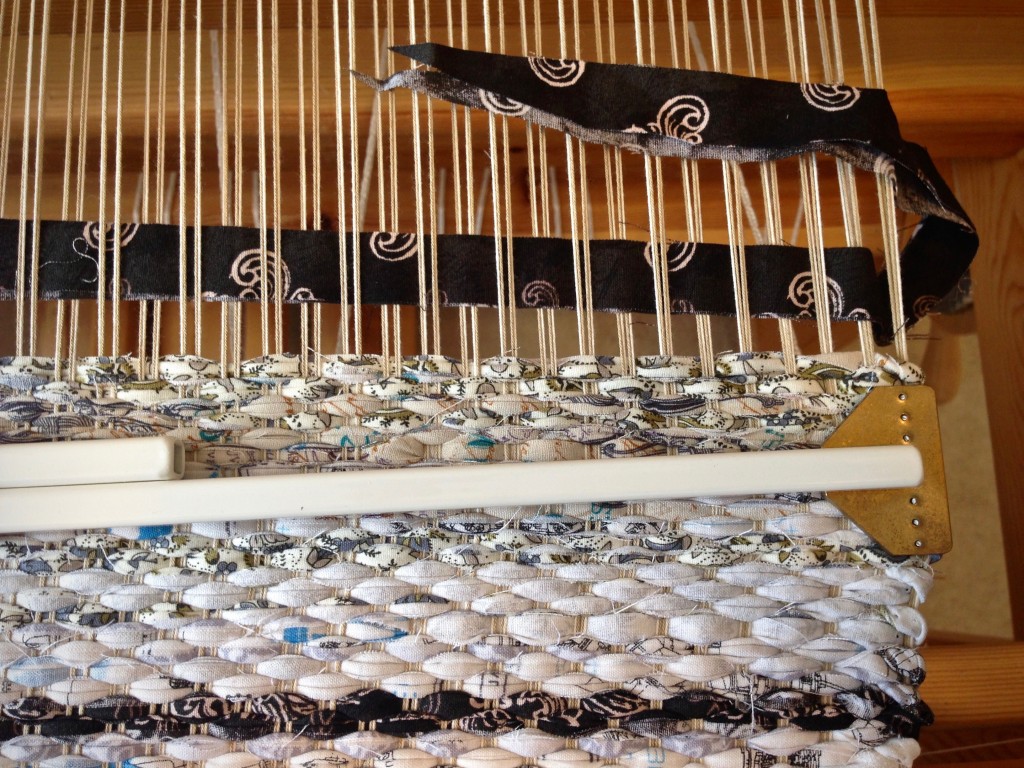
3 Beat in the first pick of the stripe.
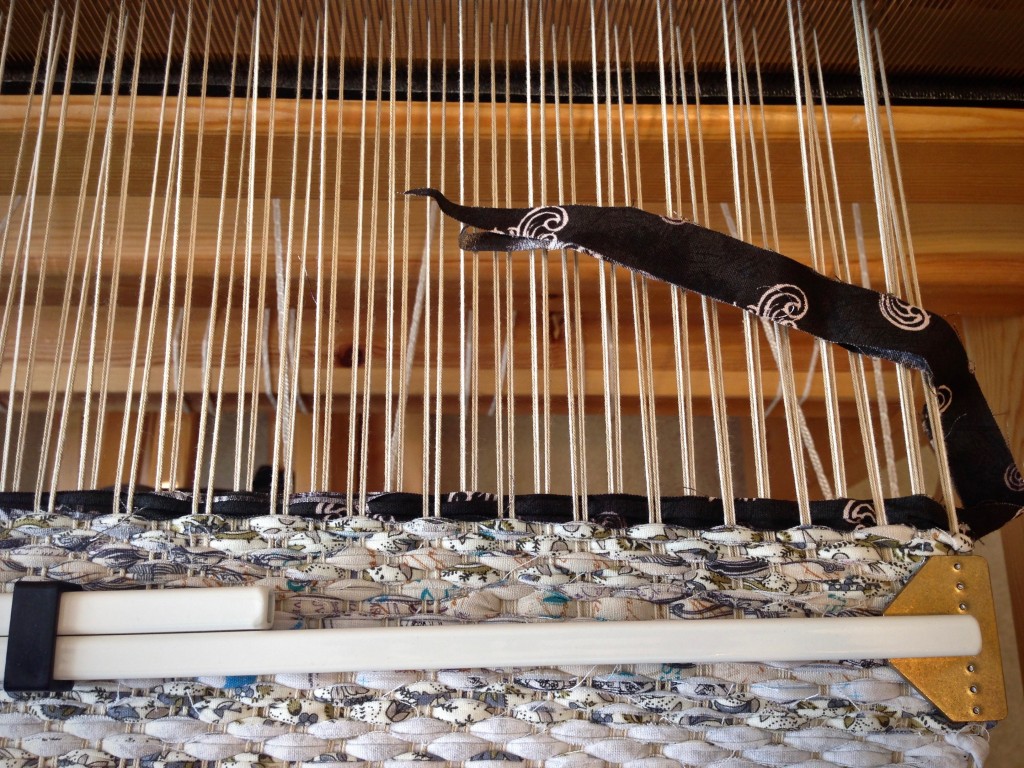
4 Change sheds. Lay the long tail into the new shed.
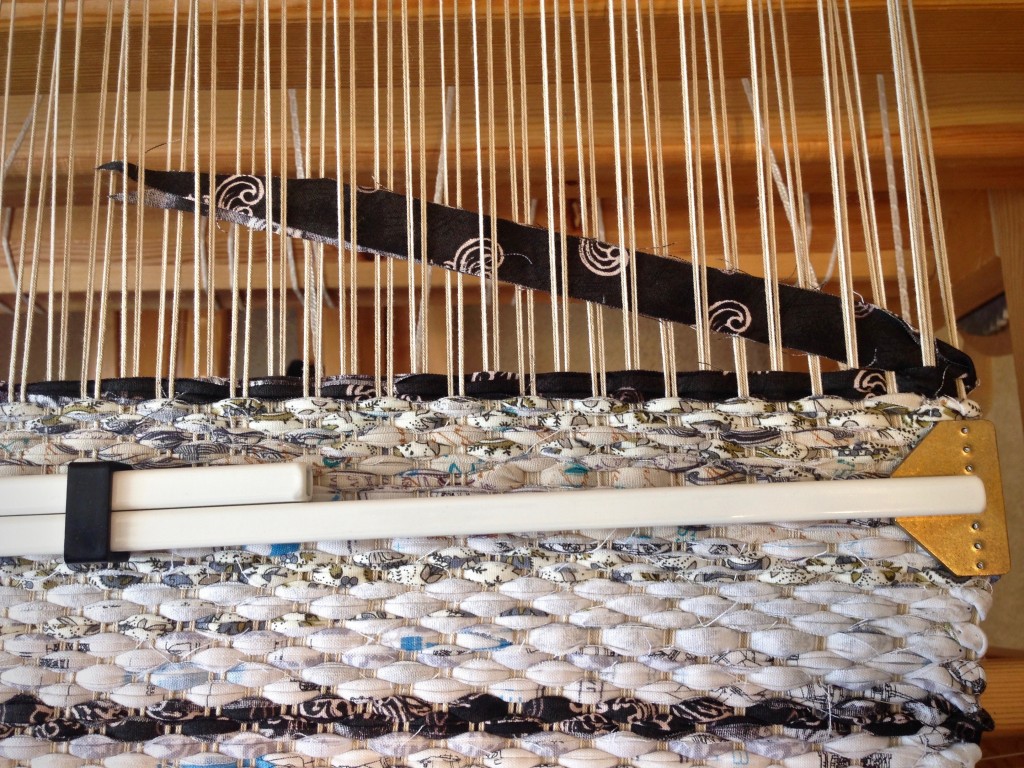
5 Send the shuttle across for the second pick, catching the previous weft to carry it up the selvedge.
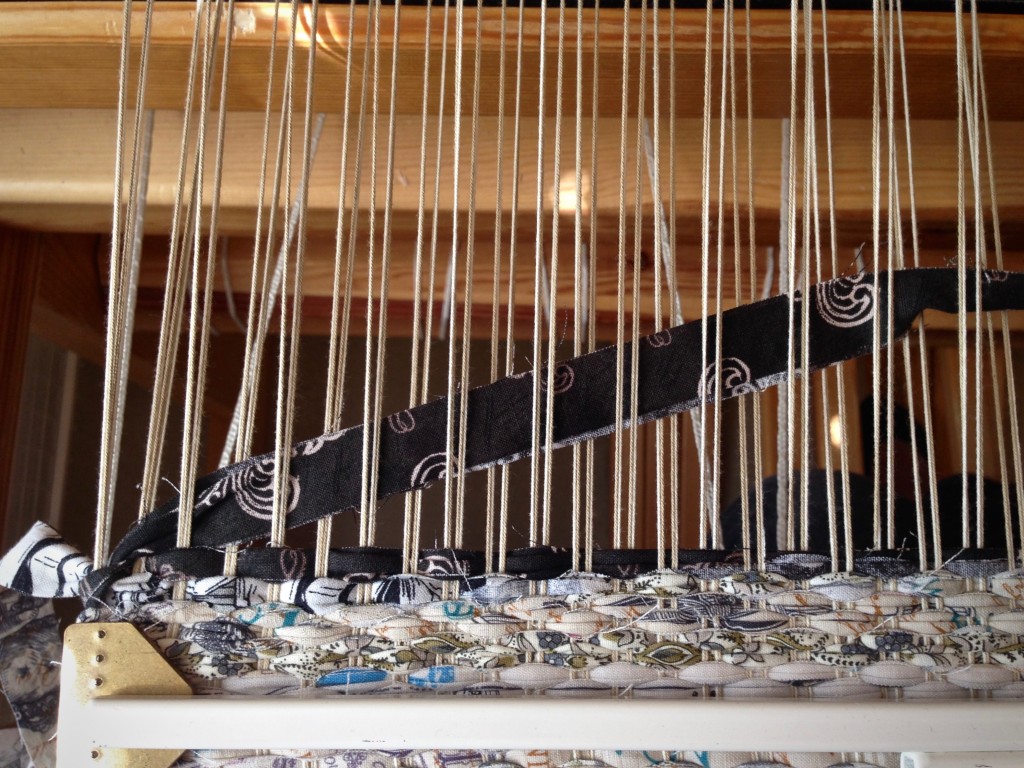
6 As the weft goes across for the second pick, bring the shuttle all the way out.
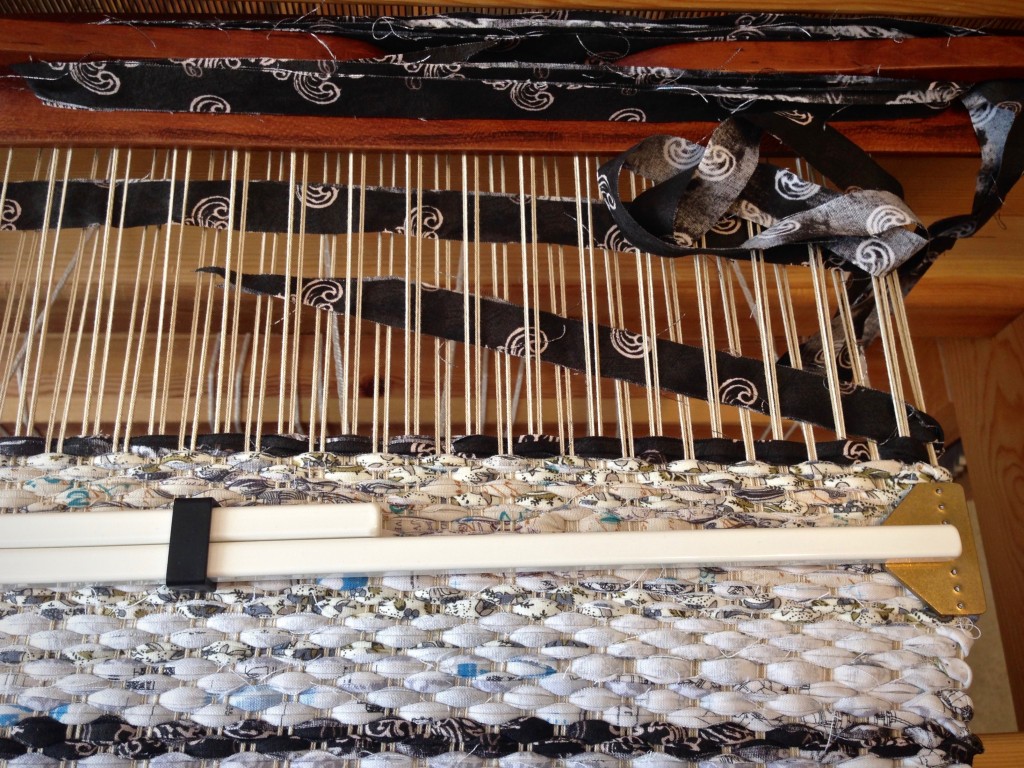
7 Pull enough of the second pick through the warp to cut a tapered edge that will overlap the tapered edge of the long tail.
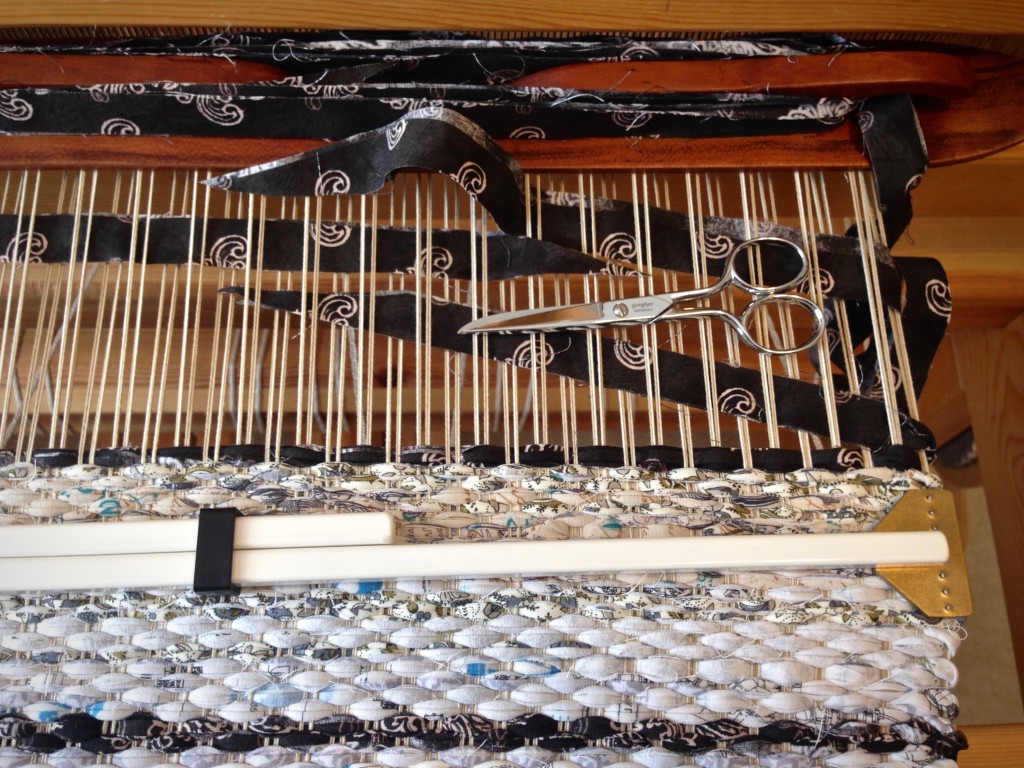
8 Overlap the two tapered fabric strips in the shed.
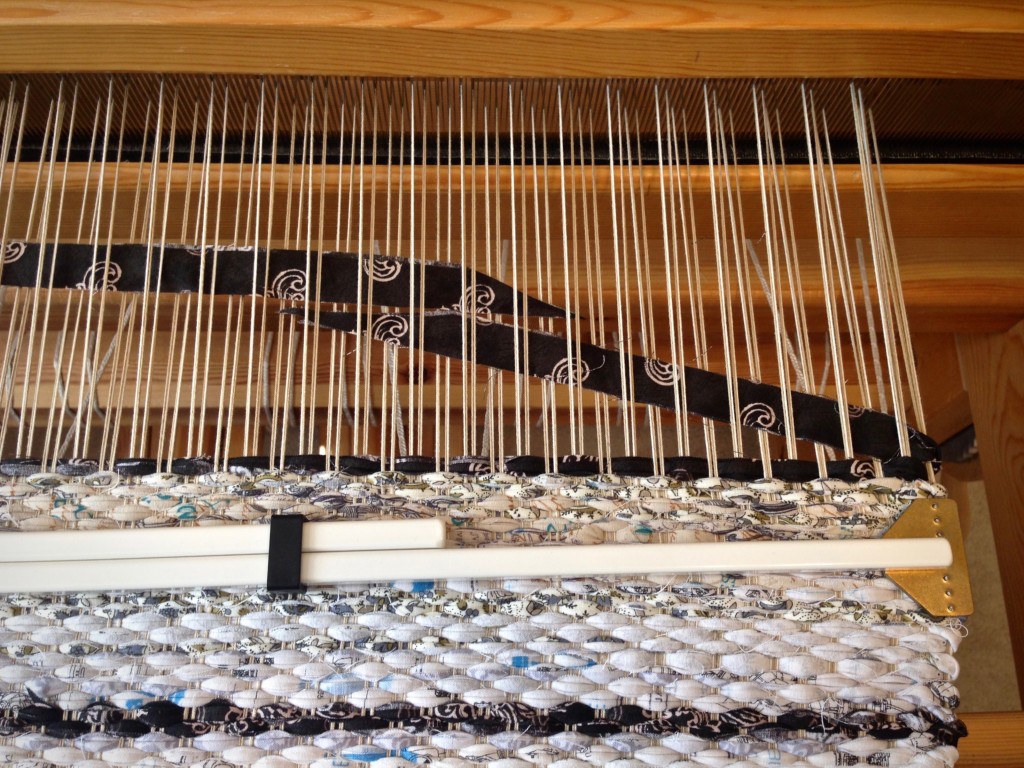
9 Beat in the second pick of the stripe.
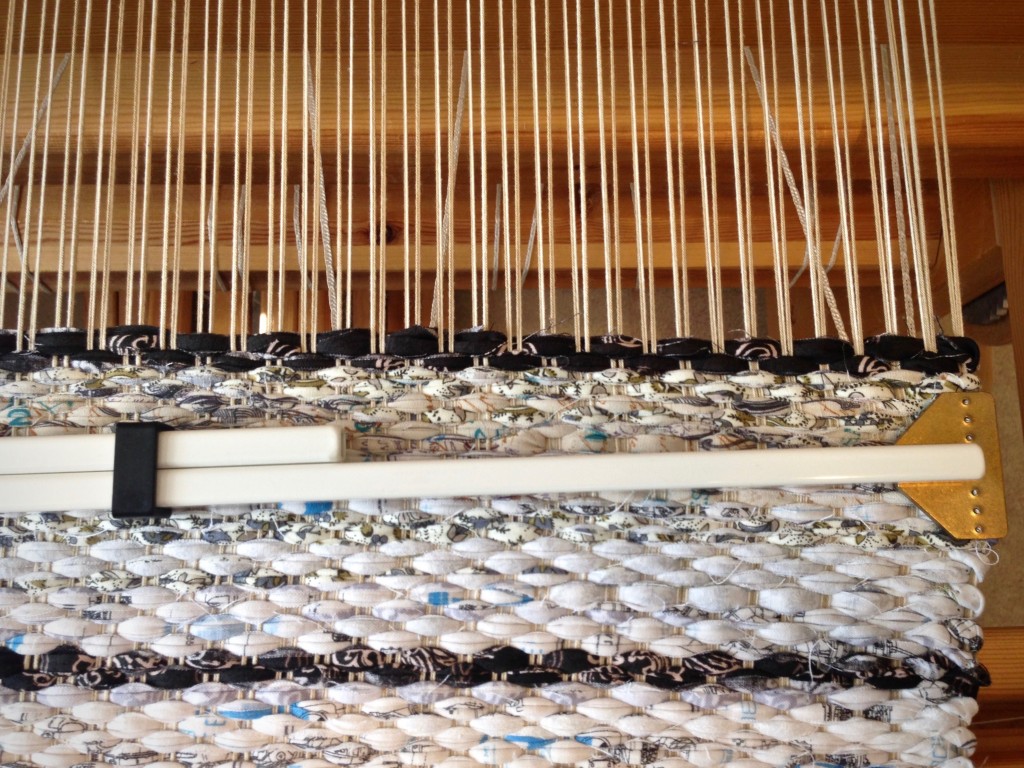
10 Continue weaving with the previous weft that was carried up the selvedge.
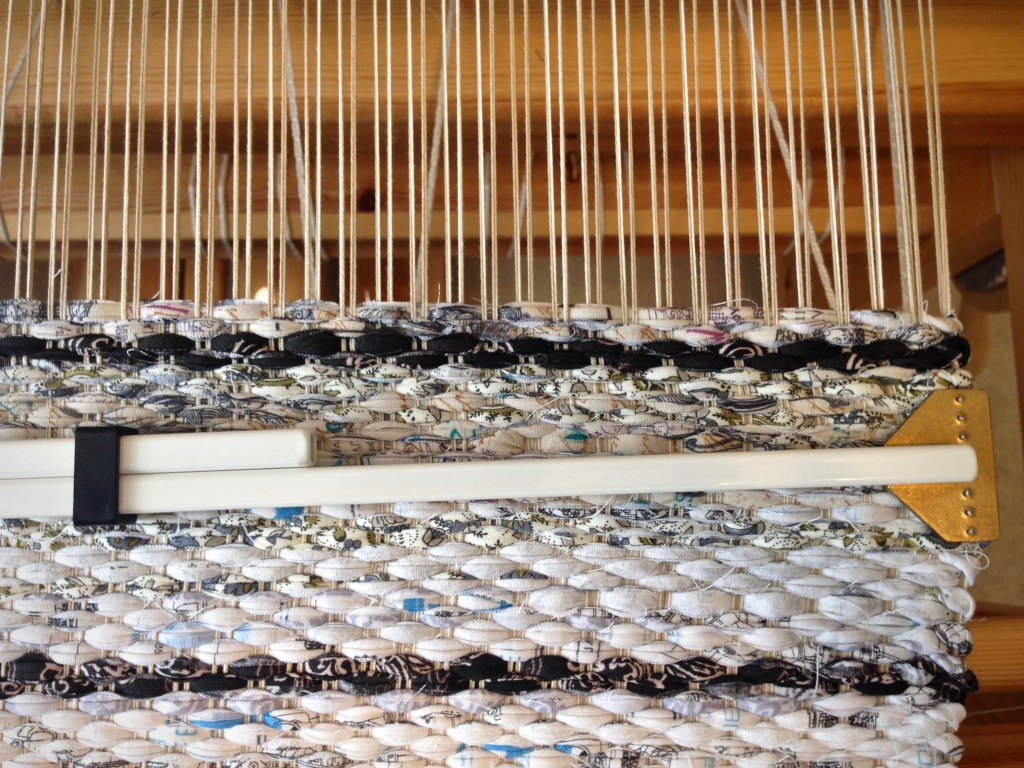
If you’re like me, you are always on the lookout for ways to enhance weaving efficiency. One little tip can improve the whole weaving experience. When you know there is so much more to learn, and you are hungry to learn, every morsel of insight is delectable.
Has your soul ever felt hungry? Mine has. The Lord is ready to fill the hungry soul with good. He fills the empty. He satisfies the hungry, meeting the deepest need. One sweet morsel leads to another, inviting us to keep coming back. Taste and see that the Lord is good.
May you be hungry for good things.
Satisfied,
Karen
